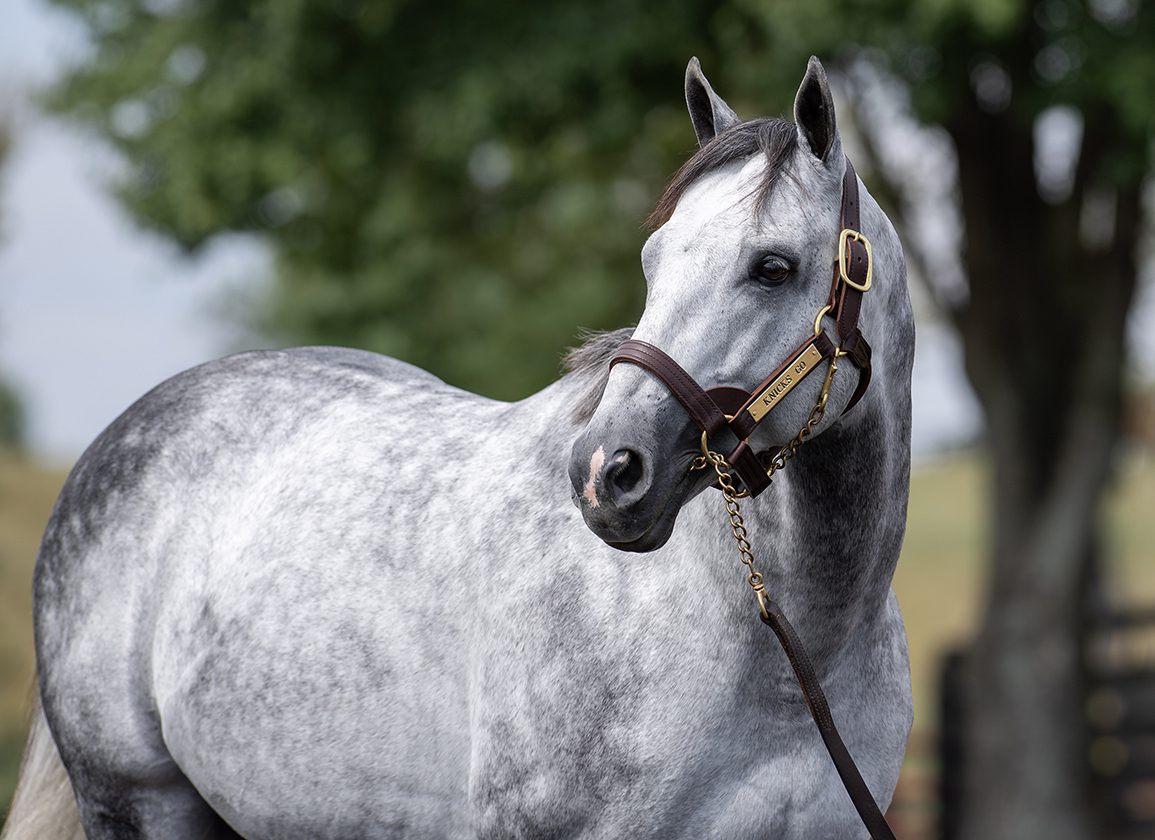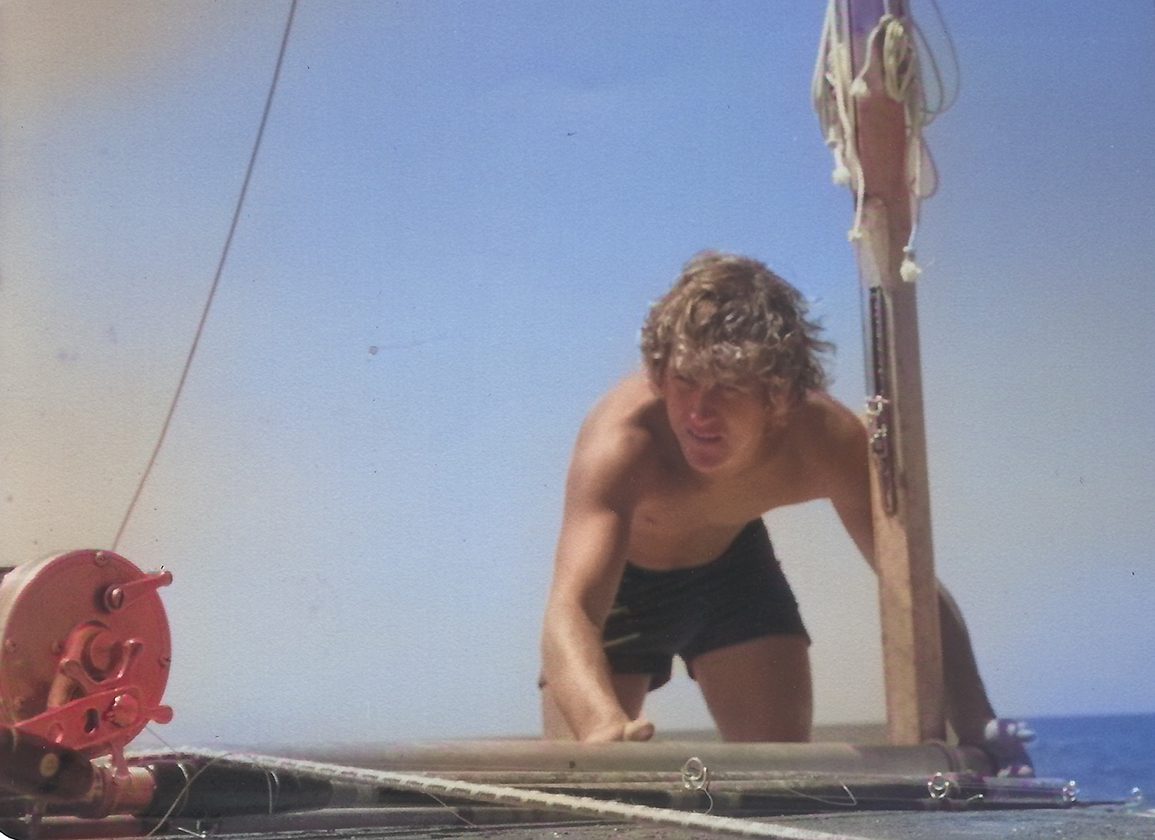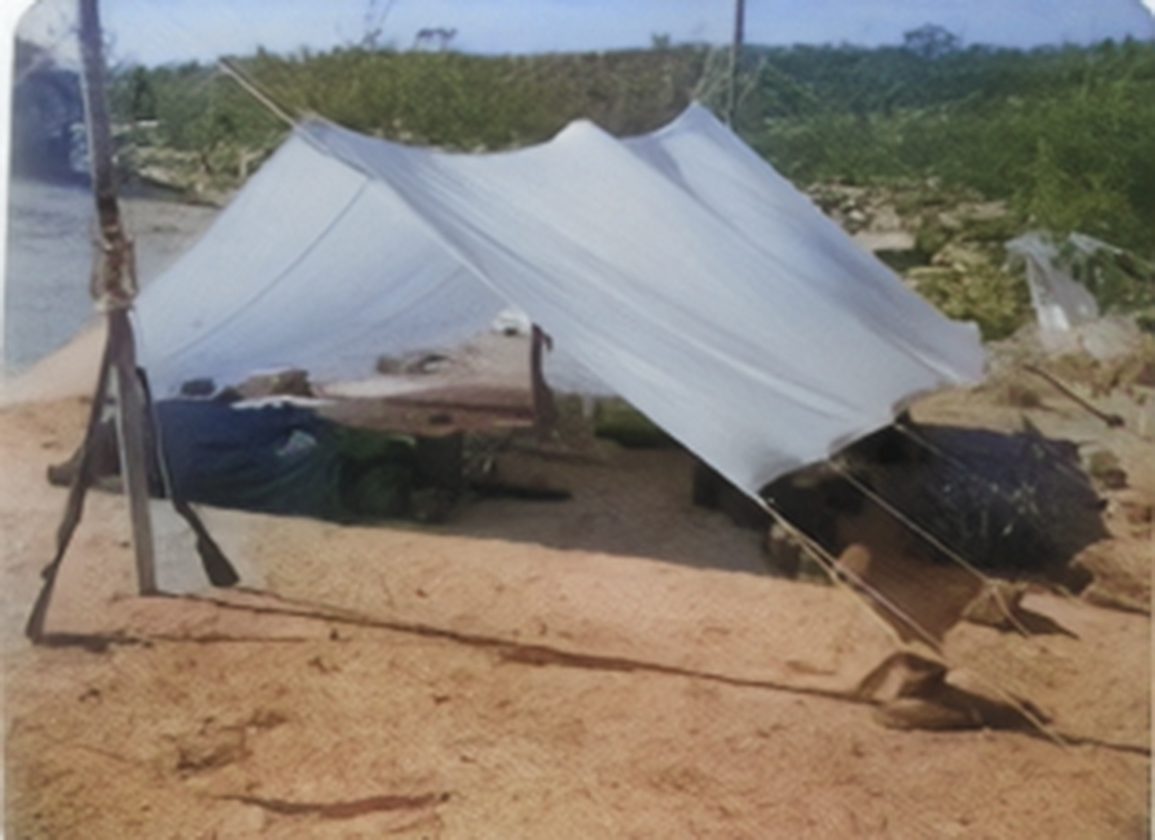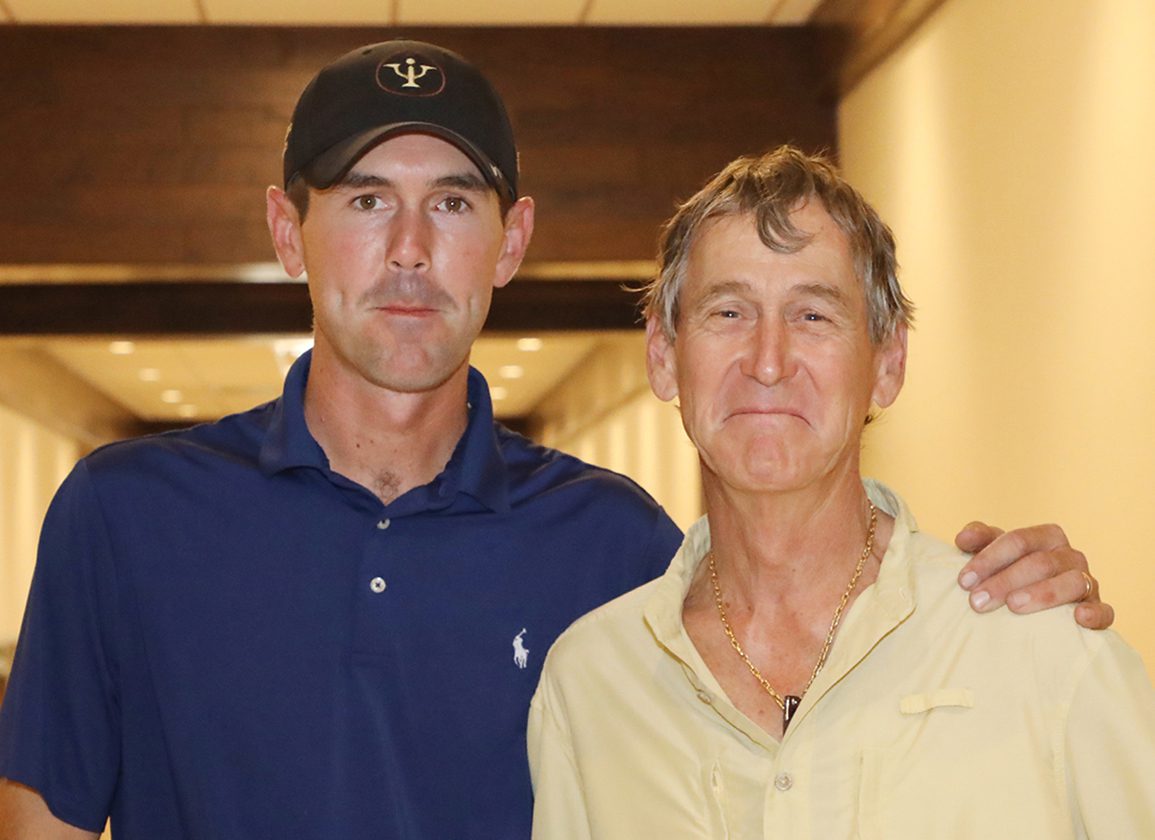The island is still there, nearly 50 years later, which would have surprised Nick de Meric at the time. He'd have assumed that there could be nothing left by now.
“Because they were basically mining it off the map,” he recalls. “It was made of iron ore. So they had these massive Euclid trucks, wheels high as a building. And all these men on shift work, living in long huts. Not quite a prison environment, but it was all-male, tropical heat, nothing to do but drink beer and play cards. A lot of these guys would have a cooler beside them while driving these huge trucks on night shift. So there were accidents. Some that drove over cliffs. Most of them, if they weren't already, were on the way to becoming alcoholics. Either running away from bad marriages, or from the law. They all had a story.”
This young Englishman was still in the early chapters of his own tale, one that would eventually bring him into our community as one of the most respected horsemen in Ocala. Back then, however, the Australian toughs working Koolan Island (next stop Indonesia) must have found him an object of some curiosity.
How did he get here? Well, horses had already long captured his imagination. Back in England, he'd shown ponies as a boy, moved onto eventing and steeplechasing, worked in racing yards. He'd passed up a university place to read English and Philosophy to make a first trip to Australia, working on a cattle ranch; went home to dabble in journalism; then a stint in agricultural college. At one point he exercised horses over the ancient gallops of Salisbury Plain for one of the great throwbacks of the English Turf. As somewhat of “a rebel and a wanderer,” however, de Meric was soon resuming his travels, returning Down Under to work a couple of years under Tommy Smith.
“A great trainer,” de Meric recalls. “Very much in the Woody Stephens, Jack Van Berg school. He would chew a few of them up, but when he found a good one, nothing was too good for them. And there were some great horses in the stable at the time. So that was a really good education.”
But the routine was numbing: up at 3 a.m., all the usual chores but also hours at the walk, riding and leading, round city blocks, in the mornings and then bareback in the afternoons. Or vanning over to Mascot Bay to swim them–behind a rowing boat.
“So picture this,” de Meric says. “Your legs are over the back of the boat and you've a shank in your hand, and there's a guy behind you rowing. A lot of horses, the first time they swim, they say, 'I'm not going in there. I'm not going there. Okay, I'm going.' And they practically get in the boat with you.
“One time a filly got loose and disappeared into the mangrove swamps. They found her two weeks later, standing there with her head down, covered in crab bites and sores. Dehydrated, but alive. And actually I think she was able to race again.”
Next de Meric bought an old car and drove up the coast with a pal. “We followed this little road through the rainforest, and it opened up onto a massive beach, just miles and miles of sand,” he recalls. “And we were like, 'Yee-hah!' And we're doing 'donuts' over the sand. Well, guess what? The car gets slower and slower, until eventually it sinks up to the hubcaps. And then suddenly that huge beach starts to get smaller and smaller, as the tide came in. I remember standing on the roof of the car, saying, 'We need to get our s*** out of here.' So we threw what we could into a backpack, waded ashore, and hitchhiked the rest of the way to Cairns.”
After staying there for a few months, de Meric traveled down to Perth where he was hired to work on Koolan Island, climbing giddy poles with a line-belt and handing kit to the electricians working on the power cables. But none of these hard-drinking men around him seemed to notice that they were surrounded by a dazzling marine environment. The one exception was a chef from New Zealand.
“So we found this old catamaran, and spent three months fixing it up,” de Meric explains. “What was cool is that everybody on the island got a bit interested in what we were doing. So on night shift, the welders would make us a little bracket for the motor, the mechanics overhauled the motor, the carpenters helped fabricate new rudders. And then we took off, up the coast. Our grand plan was to cross the Timor Sea and island hop up the Indonesian chain to Thailand.”
At the time, it wasn't even charted: just countless little islands and reefs, with 35-foot tides rushing in between and 20-knot currents. They put in at a tiny settlement on stilts, where Japanese merchants hired Thursday Islanders to dive for pearls. Three days out from this last outpost of civilization, they anchored off one of these tiny islands.
“And in the middle of the night we got hit by what they call a cockeyed bob, like a mini-hurricane,” de Meric says. “We fought this thing for three hours and finally drove the boat onto the reef. And when the tide went out, here we are high and dry. It's the right way up, but it's got holes all through the bottom.”
At least they had plenty to salvage: rice, flour, firearms, fishing tackle, not to mention plenty of wine and whiskey. They dragged it all up the beach, made a tent fly of the sail, and made camp. His buddy, remember, was a chef. So that was something, and they fished every night. When sharks started hauling off fish and fishing tackle combined, they switched to a meat hook and caught shark instead.
“Just barely edible, but Graham was good,” de Meric recalls. “The problem we did have was water. There was no fresh water, and our supply was diminishing. We made a bunch of solar distilleries: you make a little depression in the ground, fill it with leaves and brush, put a garbage bag over the top with a pebble in it and a cup underneath. And you get condensation and it drips. But that was nothing like enough.”
They had a radio, but the distances were hopeless. In certain conditions they could get onto the “Skip” frequency but only managed to raise a taxi driver somewhere in Japan. There was nothing else for it: de Meric would try to row the catamaran's dinghy back through the three days' sail to the pearl-diving hamlet. He'd go from island to island, riding each tide, resting in between. But if he could get there, then he could organize Graham's rescue as well.
The initial leg went to plan: de Meric made it to the first island, rested, then took off with the tide for the next one. But half a mile or so out, the tide turned and started rushing him back the way he came. “A depressing moment,” he says wryly.
So he must have thought he was more or less done for?
“We were kind of thinking that before I left, actually,” de Meric admits. “Leaving Graham behind was a very hard thing to do. But he was a chef and I was the seaman, son of a naval officer. Anyway there I am, scanning the horizon, and suddenly I glimpse this little bow wave just caught by the sunset. We hadn't seen a vessel of any description in 13 days out there. So I'm standing up in the dinghy, waving my arms, yelling, but it just keep going. And then, miraculously, it turns round and this boat is coming towards me.”
It turned out to be Australian coastguards, exceptionally patrolling that remote stretch because “Boat People,” as Vietnamese refugees of the time were known, had been washing up along there. They hadn't seen him, of course, but picked up a ping on the radar–and only because the dinghy was aluminum. Otherwise, well, maybe two piles of bones on two different islets might yet remain undiscovered. And nor would dozens of stakes and graded stakes winners (including a Horse of the Year) have benefited from de Meric's eventual discovery, after all these peregrinations, of a vocation that could keep him settled in one place.
And how did that happen? Usual story: Cherchez la femme! Next time he went traveling, de Meric tried the States, got a job with Lee Eaton. Met a girl on Eaton's fall yearling crew of 1981; independently they both got hired by the same Louisiana farm to prep yearlings for the 2-year-old sales; and wound up in the same staff house. “Rancho Malaria, we called it affectionately,” de Meric says. “It was right by the bayou.”
Here, they yielded to two lasting enchantments: one professional, one personal. The first yearling they pinhooked together, a filly by Nearly on Time, cost $15,000: de Meric himself had scraped together five grand, and his parents and then his uncle put in the same. Nick and Jaqui would come home from their work as freelance gallopers, and tend their filly with manic attention. They cooked bran mash on the kitchen stove and rushed it over to her hot. She made $30,000 at OBS March in 1983, and that summer they married.
“Although that may seem a paltry profit, today, at the time it felt like we'd won the lottery,” de Meric recalls. “If that filly had sold for $3,500, or gone lame, my life could have been very different. But the fact that we were able to show even a modest profit inspired us to keep going, to see whether we could make a career of this.”
So they leased a plot outside Ocala, found a couple of believers to send them a horse or two: Moreton Binn, Gerry Nielsen. Then they bought a first, 40-acre parcel, and expanded in gradual accretions until acquiring the 230 acres in 1997 that became the Eclipse Training Center.
“It had been let go, was a bit run down, but basically a really nice piece of land, with a really good track,” de Meric recalls. “So we spent time fixing it up, built two more barns, leased out some stalls. That allowed us enough cashflow to pay the mortgage, until I got rid of that about eight or nine years later, by selling some adjacent tracts with track rights.”
They had started their own program even as the 2-year-old game was itself still in its infancy. In fact, de Meric reckons that Ocala Stud must be the only outfit then selling juveniles that's still doing so today. The changes in this sector, after all, have been wild.
“And I think that's why there's been quite a high attrition rate, among those of us playing that game,” de Meric says. “Because if you don't adapt to the changing mores of buyers, and the changing dynamics of the market, you're left behind. Yes, some aspects of the business have maybe evolved in a slightly unhealthy direction. But you either quit playing, or you play by the new rules in order to survive.
“We used to 'two-minute lick' them in pairs, on the bridle. Bow neck, nice strong gallop down the lane, eyeball-to-eyeball, make them look good. And we'd average somewhere between 30 and 70 percent on our money. Never hit one out of the park, but made a decent living. And then Luke McKathan started breezing his horses singly. He was a pioneer in his own way, and very good at what he did. He had this little quarter horse rider that could make them go fast, would whip them all the way down the lane. And then one could hear Luke in the barn saying, 'Yeah, did it real easy.' That was before videos, electronic timers, any of that!”
Nowadays, of course, time is money with these bullet breezers. But surely the old ways sufficed for the better horsemen, who didn't need the crutch of the stopwatch?
“Well, people were quite good at covering up a mediocre horse!” de Meric cautions with a smile. “But yes, the better horsemen could certainly identify the better horses, and plenty of good ones came out of those sales. But it gradually became apparent that you were putting a cap on your upside, doing it the way we were. So, little by little, I started out breezing in pairs and then singly.”
In the process Darrin Miller, who now operates a public stable, proved a real asset. “Riding a horse, he was a master at making it look like he had three more gears, when in fact he was all out,” de Meric says. “One isn't completely comfortable with every facet of the way it has evolved, with speed becoming more and more the thing. But my feeling is that there's a lot you can do to make it easier on your horses.”
And apart from anything else, that starts with selecting the right stock. “We're quite conservative, by comparison to some of our peers,” de Meric says. “But our horses usually show up when it's time to push the button. We aren't famous for bullet works. We don't complain if we get one, but we never demand them. We focus on good movers, and if they're a tick slower than some, that hasn't really hurt us that badly. We just shop carefully and, when we get them home, treat them the best we possibly can.”
A cornerstone of which philosophy is a “resistance-free” education. In fact, de Meric dislikes the very word “breaking,” with its connotations of confrontation. The celebrated Idaho horseman Martin Black worked with their program for three seasons, teaching his methods, and Jaqui has become especially adept at tutoring the young horses.
But while they duly prioritize mentality, physique remains central to their shortlisting.
“I think that's what we start with because, to be honest, everything else follows,” de Meric reasons. “We're looking for horses with a little more to come, but also for that element of precocity. And we like to see that in the pedigree also. But, yes: athletic, balanced, good-moving individuals. If they're athletes, first and foremost, then we'll handicap pedigree and value.”
And how hard is it to gauge competence for such a specific role, if you only get a fleeting glimpse of these yearlings glossed for the sale ring?
“Well, there's an element of guesswork, and also an element of judgment based on experience,” de Meric says. “You're watching for little clues. I got past the point where I look for what you might call 'projects,' or 'fixer-uppers.' Some people make a good living doing that. But I'm looking for horses that will appeal to higher-end buyers, if possible.”
Which is another reason why a horse needs to do more than merely flash precocity. It was this program, remember, that honed Knicks Go. In fact, de Meric says that it was at his urging that the KRA, who had five in the sale, changed their minds and retained the future Horse of the Year to race. He wasn't fashionably bred, of course, nor very big–but he had shown de Meric unusual grit.

Knicks Go at Taylor Made | Sarah Andrew
“We're asking them to do a lot,” de Meric remarks. “These days, as we've said, people want to see these horses work fast. But they also want horses that will possibly have Classic potential, train on as 3- and 4-year-olds. So they need to have it all, and to vet well at the end of it. When you actually stop and add it all up, you think, 'What the heck are we doing? This is madness.' Because the odds are stacked against you from the minute you set foot on the sales ground. But it's what we do. It's the bed we've made. And it's been good to us over the years.”
As you can read in tomorrow's TDN, in de Meric's contribution to our “Succession” series, he's as proud of the parallel program developed by his son Tristan (and daughter-in-law Valerie) as he is concerned by the kind of future that may await the next generation. The way things are going for our sport's reputation in Main Street, it must almost feel like watching that bow wave diminishing into the sunset, all those years ago. But maybe this boat can also turn round.
“There's a lot of momentum in the wrong direction right now,” de Meric acknowledges. “We keep running into these unexpected headwinds, into challenge after challenge. As a generation, I don't think we've done a spectacular job as stewards of our sport. At the same time, I feel we have to stay positive.
“There's enough of us, collectively, that are passionate about this game, that would almost die rather than see it go under. People talk about greyhounds, about harness racing. Ours is a different world. When it gets under your skin, there's no fighting it. That's why billionaires become millionaires playing this game. Because there's no feeling like it.
“It's all those lows that make the highs even more exciting. It doesn't matter if you're racing, pinhooking, breeding, selling: those highs, it's a euphoric feeling. I think all of us, by definition, tend not to be the kind who like the middle ground. Because this is not that kind of business. It's a rollercoaster. And it's not for the faint of heart. When it's good, it's great; and when it sucks, it really sucks. But at the end of the day, we're working with the animals we love. And in that we are truly blessed.”
The post De Meric’s Odyssey Brings Him ‘Home’ To Horses appeared first on TDN | Thoroughbred Daily News | Horse Racing News, Results and Video | Thoroughbred Breeding and Auctions.



